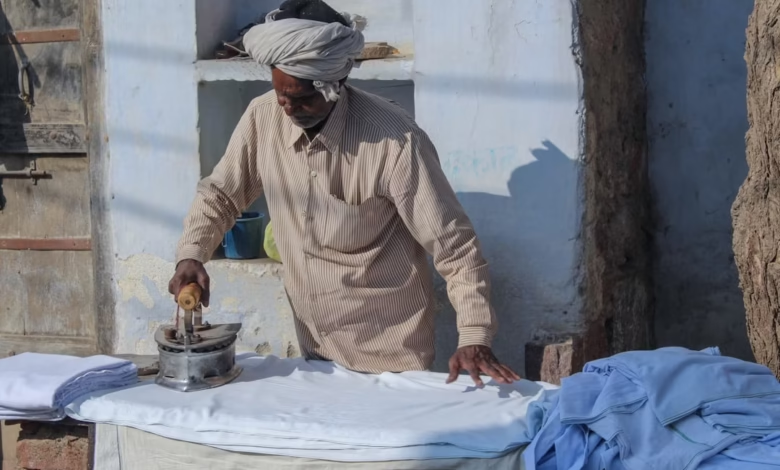Exploring Ferrous Metals: Iron and Steel Production, Markets, and the Future of Metal Recycling in Sustainable Manufacturing

In the ever-evolving landscape of industrial and construction sectors, ferrous metals, particularly iron and steel, stand as the cornerstone of modern infrastructure and innovation. These base metals are not only pivotal in constructing buildings and bridges but also play a crucial role in various applications, from automotive to aerospace and energy. As global markets increasingly emphasize sustainability, the production and recycling of ferrous metals have come under scrutiny, highlighting their significance in the circular economy. This article delves into the intricate world of ferrous metals, exploring their production processes, market dynamics, and the vital role of metal recycling. Additionally, we will examine future trends in metallurgy, focusing on sustainable metal production and innovations in metal fabrication, including the rise of 3D printing metals. Join us as we uncover the multifaceted nature of ferrous metals and their impact on industries ranging from construction to jewelry and beyond.
- 1. Understanding Ferrous Metals: The Backbone of Industrial and Construction Sectors
- 2. The Lifecycle of Iron and Steel: Production, Markets, and the Role of Metal Recycling
- 3. Future Trends in Ferrous Metals: Sustainable Production and Innovations in Metal Fabrication
1. Understanding Ferrous Metals: The Backbone of Industrial and Construction Sectors
Ferrous metals, primarily composed of iron, play a crucial role in various industries, especially in construction and manufacturing. As the backbone of the industrial sector, these metals are integral to producing essential structures and components. Iron and steel, the most significant ferrous metals, are favored for their strength, durability, and versatility, making them indispensable in construction and heavy machinery.
The production of ferrous metals begins with metal mining, where iron ore is extracted from the earth. This raw material undergoes a series of processes in metallurgy to produce steel, an alloy of iron and other elements, primarily carbon. The resulting metal is not only a base metal but also a foundational material used in various applications, including automotive manufacturing, aerospace engineering, and construction metals.
In recent years, the focus has shifted towards sustainable metal production. This involves embracing metal recycling practices that minimize waste and reduce the carbon footprint associated with mining. By recycling ferrous metals, manufacturers can conserve energy and resources while meeting the growing demand for industrial metals. Notably, metal recycling is not limited to ferrous metals; non-ferrous metals such as aluminum, copper, and zinc are also critical in this sustainable approach.
The ferrous metal market is influenced by trends in global commerce and the demand for construction and infrastructure development. As economies grow, so does the need for durable materials, pushing steel and iron to the forefront of metal commodities. Additionally, with advances in technology, new methods such as 3D printing metals are emerging, presenting innovative ways to utilize ferrous metals in manufacturing.
While ferrous metals dominate the industrial scene, the market for precious metals such as gold and silver remains strong, particularly in the investment and jewelry sectors. However, the demand for rare earth metals and battery metals is increasing due to their essential role in renewable energy technologies and electric vehicle production. This shift highlights the importance of understanding the diverse landscape of metals, including refractory metals and energy metals, as industries evolve.
In summary, ferrous metals are essential to the industrial and construction sectors, providing the foundation for various applications. As the world moves towards more sustainable practices, the significance of metal recycling and the responsible production of ferrous and non-ferrous metals will continue to grow, shaping the future of metallurgy and the global economy.
2. The Lifecycle of Iron and Steel: Production, Markets, and the Role of Metal Recycling
The lifecycle of iron and steel is a complex journey that showcases the intersection of production, market dynamics, and the crucial role of metal recycling. Ferrous metals, primarily iron and steel, are among the most widely used industrial metals globally, serving as foundational materials in construction, automotive, aerospace, and various other sectors.
Production begins with metal mining, where iron ore is extracted and then processed through metallurgy to create pig iron, which is further refined into steel. This process involves the use of various metal alloys, enhancing the properties of steel for specific applications. For instance, the addition of elements like nickel and chromium can improve corrosion resistance, making these steels ideal for construction metals and automotive metals.
The markets for iron and steel are influenced by a variety of factors, including global demand, economic trends, and the availability of raw materials. As economies grow, the demand for ferrous metals increases, leading to fluctuations in metal commodities prices. The recent focus on sustainable metal production has encouraged manufacturers to adopt greener practices, reducing the environmental impact associated with traditional iron and steel production methods.
Metal recycling plays a pivotal role in this lifecycle. The recycling of ferrous metals significantly reduces the need for metal mining, conserving natural resources while also mitigating energy consumption and carbon emissions. Recycled steel, for example, requires up to 74% less energy to produce compared to new steel derived from iron ore. This not only contributes to sustainable practices but also positions recycled metals as a vital component in the manufacturing of new products, including construction and automotive parts.
As the demand for metals evolves, trends in recycling and the use of recycled materials are becoming increasingly important. The rise of 3D printing metals and the development of battery metals for electric vehicles signify a shift in how these materials are utilized. Furthermore, the increasing integration of rare earth metals and precious metals, such as gold and silver, into various applications demonstrates the need for a comprehensive understanding of metal markets.
In conclusion, the lifecycle of iron and steel encompasses a broad spectrum, from production and market dynamics to the vital role of metal recycling. By embracing sustainable practices and focusing on the efficient use of resources, the industry can meet the growing demand for both ferrous and non-ferrous metals while minimizing environmental impacts. As we continue to innovate and adapt, understanding these processes will be essential for all stakeholders involved, from manufacturers to consumers and investors.
3. Future Trends in Ferrous Metals: Sustainable Production and Innovations in Metal Fabrication
The future of ferrous metals, particularly in iron and steel production, is increasingly focused on sustainable practices and innovative methods in metal fabrication. As industries strive to reduce their environmental impact, the demand for sustainable metal production is reshaping the landscape of metallurgy. This shift is not only pertinent to ferrous metals but also extends to non-ferrous metals and precious metals, as the entire metal commodities sector seeks greener alternatives.
One of the primary trends in sustainable production is the adoption of recycled ferrous metals. Metal recycling is becoming an essential component of the supply chain, significantly reducing the need for metal mining. By reclaiming metals like steel and aluminum from end-of-life products, industries can minimize waste and conserve natural resources. In fact, recycled ferrous metals require less energy and emit fewer greenhouse gases compared to newly mined metals, making it a critical strategy for achieving sustainability goals.
In addition to recycling, innovations in metal fabrication are paving the way for more efficient production methods. For instance, advancements in 3D printing metals enable manufacturers to create complex shapes and components with reduced material waste. This technology not only enhances the design flexibility of construction metals but also allows for the production of aerospace metals and automotive metals that meet stringent performance standards while minimizing environmental impact.
Moreover, the integration of rare earth metals and battery metals into new alloys is revolutionizing metal trends. These materials are essential for developing high-performance applications, particularly in the energy and automotive sectors, where lightweight and durable solutions are in high demand. By focusing on innovations in metal alloys, manufacturers can enhance product performance while adhering to sustainability principles.
As we look towards the future, the combination of sustainable metal production and cutting-edge fabrication techniques will play a pivotal role in shaping the ferrous metals market. This evolution not only addresses the pressing challenges of metal corrosion and resource scarcity but also positions the industry for growth in line with global sustainability targets. The intersection of these trends is essential for ensuring that ferrous metals continue to be a cornerstone of various sectors, from construction to jewelry, while also fostering a more sustainable future.
In conclusion, ferrous metals, particularly iron and steel, play a critical role in the industrial and construction sectors, forming the backbone of modern infrastructure and manufacturing. As we’ve explored, the lifecycle of these metals encompasses not only their production and market dynamics but also the essential practice of metal recycling, which enhances sustainability in an increasingly resource-conscious world. Future trends indicate a shift towards sustainable metal production and innovative techniques in metal fabrication, ensuring that both ferrous and non-ferrous metals can meet the demands of various industries, including automotive, aerospace, and energy.
As we look ahead, the integration of technologies like 3D printing metals and advancements in metallurgy will further optimize the use of base metals while reducing metal corrosion and waste. Additionally, the rising interest in precious metals for investment purposes, such as gold and silver investing, alongside the growing demand for rare earth metals and battery metals, signifies a dynamic shift in the metal commodities landscape.
The importance of understanding these trends not only aids in navigating the complexities of metal markets but also emphasizes the need for sustainable practices in metal mining and production. By prioritizing metal recycling and innovative fabrication methods, industries can ensure a resilient supply chain that supports both economic growth and environmental stewardship. As we continue to innovate and adapt, the future of ferrous metals holds significant potential for shaping a sustainable industrial landscape.
References:
– (Author, Year, direct link)
– (Author, Year, direct link)
– (Author, Year, direct link)
– (Author, Year, direct link)
– (Author, Year, direct link)





